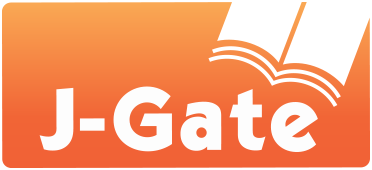EFL Tertiary Learners' Perceptions on Ease of Use of Portable Devices in English Mobile Learning at a University in Ho Chi Minh City, Vietnam
DOI:
https://doi.org/10.54855/acoj.231423Keywords:
EFL tertiary students, ease of use of portable devices, mobile learning, MALL, perceptionsAbstract
As the remarkable breakthrough of the age of revolution 4.0, mobile learning (M-learning) appears among the sharp development of modern technology. Their clever features have been discovered to have accompanied the exponential growth of mobile devices to enhance students' learning whenever and wherever. Mobile-assisted language learning (MALL) has so been considered to benefit individuals' English proficiency. Students' attitudes on utilizing mobile devices for learning while being connected to a wireless network need to be carried out, even though learning through mobile devices is expected to apply appropriately to teaching and learning. Through a survey of 207 university EFL students using a questionnaire with 13 English-Vietnamese statements within 20 minutes, this article aims to exhibit EFL learners' behaviors and acceptance of the use of mobile devices in English learning at a university in Vietnam. The survey ran within two weeks in the first semester of the 2019–2020 school year at a University in Ho Chi Minh City, Vietnam. A quantitative approach was used to gather and analyze data from the questionnaire under SPSS version 20. Research findings demonstrated that learners' opinions regarding adopting portable technology in English learning are favorable. The learner supports this virtual learning thanks to mobile gadgets' smart functions offering convenient learning without demanding users' efforts to manipulate. Neither my current university firmly welcomes mobile learning applications to serve flexible education and training in the future.References
Abu-Al-Aish, A., & Love, S. (2013). Factors Influencing Students' Acceptance of M-Learning: An Investigation in Higher Education. International Review of Research in Open and Distance Learning, 14(5), 83-107. DOI: https://doi.org/10.19173/irrodl.v14i5.1631
Chen, Y-S., Chen, T-S., & Huang, C-J. (2002). SOM. Spiral-Fat-Tree-Based on-Demand Multicast Protocol in a Wireless Ad-Hoc Network. Computer Communications, 25(17), 1684–1695.
Davis, F. D. (1989). Perceived usefulness, perceived ease of use, and user acceptance of information technology. MIS Quarterly, 13(3), 319-340.
Feser, J. (2010). M-Learning is not E-learning on a mobile device float. https://gowithoat.com/2010/04/mlearning-is-not-elearning-on-amobile-device/
Hiroyuki, O. (2021). The Integration of 21st Century Skill and Virtual Learning with COVID-19. AsiaCALL Online Journal, 12(3), 22-27. Retrieved from https://asiacall.info/acoj/index.php/journal/article/view/30
Iqbal, S., & Ahmed Bhatti, Z. (2015). An Investigation of University Student Readiness towards M-learning using Technology Acceptance Model. The International Review of Research in Open and Distributed Learning, 16(4). https://doi.org/10.19173/irrodl.v16i4.2351
Kuciapski, M. (2016). Students’ acceptance of M-learning for higher education – UTAUT model validation. Information Systems: Development, Research, Applications, Education, 264, 155-166.
Lefevre, V. (2012). Gender Differences in Acceptance by Students of Training Software for Office Tools. ATINER's Conference Paper Series, No: EDU2012-0138 Gender. https://www.atiner.gr/papers/EDU2012-0138.pdf.
Naismith, L., Lonsdale, P., Vavoula, G., & Sharples, M. (2004). Literature Review in Mobile Technologies and Learning. Futurelab Series, University of Birmingham. Available at: https://lra.le.ac.uk/jspui/bitstream/2381/8132/4/5B08
Napitupulu, D., Kadar, J. A., & Jati, R. K. (2017). Validity testing of technology acceptance model based on factor analysis approach. Indonesian Journal of Electrical Engineering and Computer Science, 5(3), 697-704-697. https://doi.org/10.11591/ijeecs.v5.i3
Ngo, T. V. K., & Gwangyong, G. (2014). Factors influencing mobile-learning adoption intention: an empirical investigation in high education. (Ph.D. Thesis).
O’Malley, C., Vavoula, G., Glew, J., Taylor, J., Sharples, M., & Lefrere, P. (2003). Guidelines for learning/teaching/tutoring in a mobile environment. MOBIlearn Deliverable, 4. Retrieved from: https://files.eric.ed.gov/fulltext/EJ932239.pdf.
Pollara, P. C. (2011). Mobile learning in higher education: a glimpse and a comparison of student and faculty readiness, attitudes and perceptions. LSU Doctoral Dissertations. 2349. http://digitalcommons.lsu.edu/gradschooldissertations/2349.
Quinn, C. (2000). M-learning: Mobile, wireless, in your pocket learning. LineZine, Fall 2000. Retrieved on August 28, 2007, from http://www.linezine.com/2.1/features/commwiyp.htm.
Raaij, V. E. M. & Schepers, J. J. L. (2008). The acceptance and use of a virtual learning environment in China. Computers & Education, 50, 838-852. http://dx.doi.org/10.1016/j.compedu.2006.09.001
Sharples, M. (2006). Big issues in mobile learning. Report. Nottingham: Kaleidoscope Research.
Tobias, J. L. Valiente, J., R., & Reich, J. (2020). Studying learner behavior in online courses with free certificate coupons: results from two case studies. International Review of Research in Open and Distributed Learning. http://www.irrodl.org/index.php/irrodl/issue/view/101/12.
Trinh, T. P. T. (2014). The exploitation of applications on mobile phones to support grade 12 students in high schools in mathematics self-study. The Vietnam Institute of educational sciences. Ph.D. Thesis.
Truong, N. K. V., & Le, Q. T. (2022). Utilizing YouTube to Enhance English Speaking Skill: EFL Tertiary Students’ Practices and Perceptions. AsiaCALL Online Journal, 13(4), 7-31. DOI: https://doi.org/10.54855/acoj.221342
Vo, T. L. (2017). Surveying and assessing Sai Gon University English pedagogy students’ attitudes towards M-learning. Scientific Journal of Saigon University. 33(58), ISSN: 1859-3208.
Downloads
Published
How to Cite
Issue
Section
License
Copyright (c) 2023 Vo Thuy Linh

This work is licensed under a Creative Commons Attribution 4.0 International License.
License
Authors retain copyright and grant the journal the right of first publication with the work simultaneously licensed under a Creative Commons Attribution 4.0 International License that allows others to share the work with an acknowledgment of the work's authorship and initial publication in this journal.
Authors are able to enter into separate, additional contractual arrangements for the non-exclusive distribution of the journal's published version of the work (e.g., post it to an institutional repository, in a journal or publish it in a book), with an acknowledgment of its initial publication in this journal.
Authors are permitted and encouraged to post their work online (e.g., in institutional repositories or on their website) prior to and during the submission process.
Copyright
The copyright of all articles published in the acoj remains with the Authors, i.e. Authors retain full ownership of their article. Permitted third-party reuse of the open access articles is defined by the applicable Creative Commons (CC) end-user license which is accepted by the Authors upon submission of their paper. All articles in the acoj are published under the CC BY-NC 4.0 license, meaning that end users can freely share an article (i.e. copy and redistribute the material in any medium or format) and adapt it (i.e. remix, transform and build upon the material) on the condition that proper attribution is given (i.e. appropriate credit, a link to the applicable license and an indication if any changes were made; all in such a way that does not suggest that the licensor endorses the user or the use) and the material is only used for non-commercial purposes.











